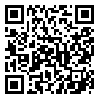BibTeX | RIS | EndNote | Medlars | ProCite | Reference Manager | RefWorks
Send citation to:
URL: http://hakim.tums.ac.ir/article-1-2211-en.html
2- Professor, Department of Health Economics and Management Sciences, School of Health, Tehran University of Medical Sciences, Tehran, Iran.
3- Ph. D. student, Human Resource Mgmt. , Islamic Azad University of North Tehran Branch, Tehran, Iran.
4- Associate Professor, Department of Health Information Technology, School of Paramedical and Rehabilitation, Mashhad University of Medical Sciences, Mashhad, Iran. ,
Introduction: Due to the nature of healthcare services, decisions leading to changes in hospital processes are more sensitive. Therefore, managing change in hospitals requires special attention. This study was conducted with the aim of providing a framework for initial stakeholder engagement in hospital change management to improve efficiency.
Methods: This applied study by qualitative method and nominal group technique with a targeted selection of 22 people, including 68% women and 32% men, with an average experience of 8 years ,with leadership experience or involvement in successful change processes in hospitals or relevant research at Mashhad University of Medical Sciences were purposefully selected. In total, eight main sessions and ten smaller sessions were conducted. The sessions were managed using the Potter nominal group technique in five stages: topic clarification, idea generation, idea sharing, discussion, and voting.
Results: The four main solutions included: 1)examining the acceptance of change in hospitals (including six actions: examining characteristics, history, the culture of change, achievements, related actions, decision-making centers, and examining resistance status in upper-level institutions); 2) stakeholder analysis (including identifying stakeholders, determining their power and interest levels, drawing a matrix, and identifying key stakeholders); 3) examining the level of acceptance by key stakeholders (including disbelief, belief, trust, and confidence levels); 4) engaging key stakeholders with a participatory approach (including using dialogue, deep conversation, and work partnerships).
Conclusion: Effective change management at the hospital level requires sufficient attention to stakeholder engagement. In this study, the necessity of understanding key stakeholders, considering their acceptance level, and engaging them through appropriate participatory strategies within the organizational culture were emphasized for the success of the initial stakeholder engagement process.
Received: 2023/07/12 | Accepted: 2022/12/11 | Published: 2022/12/11
| Rights and permissions | |
 |
This work is licensed under a Creative Commons Attribution-NonCommercial 4.0 International License. |





